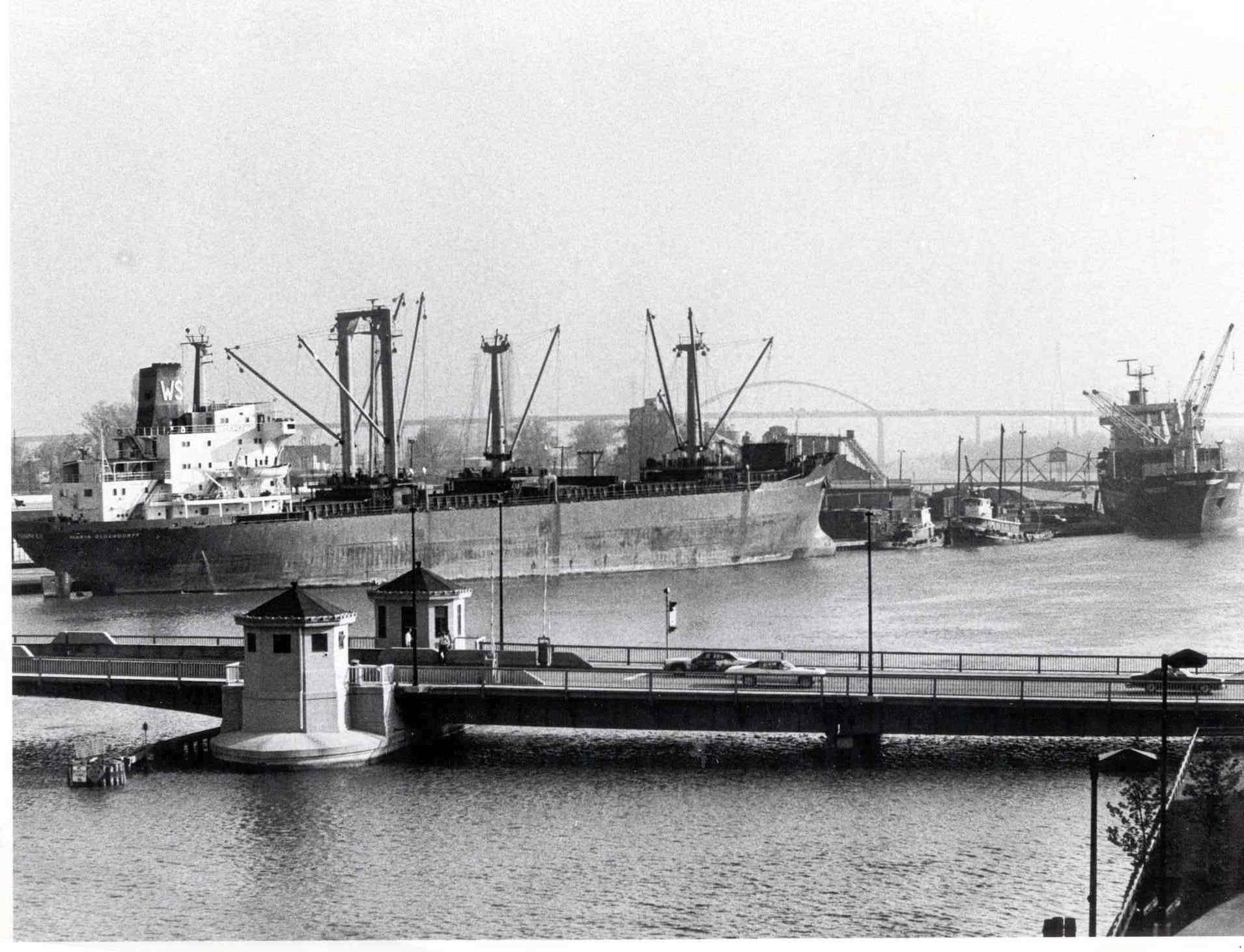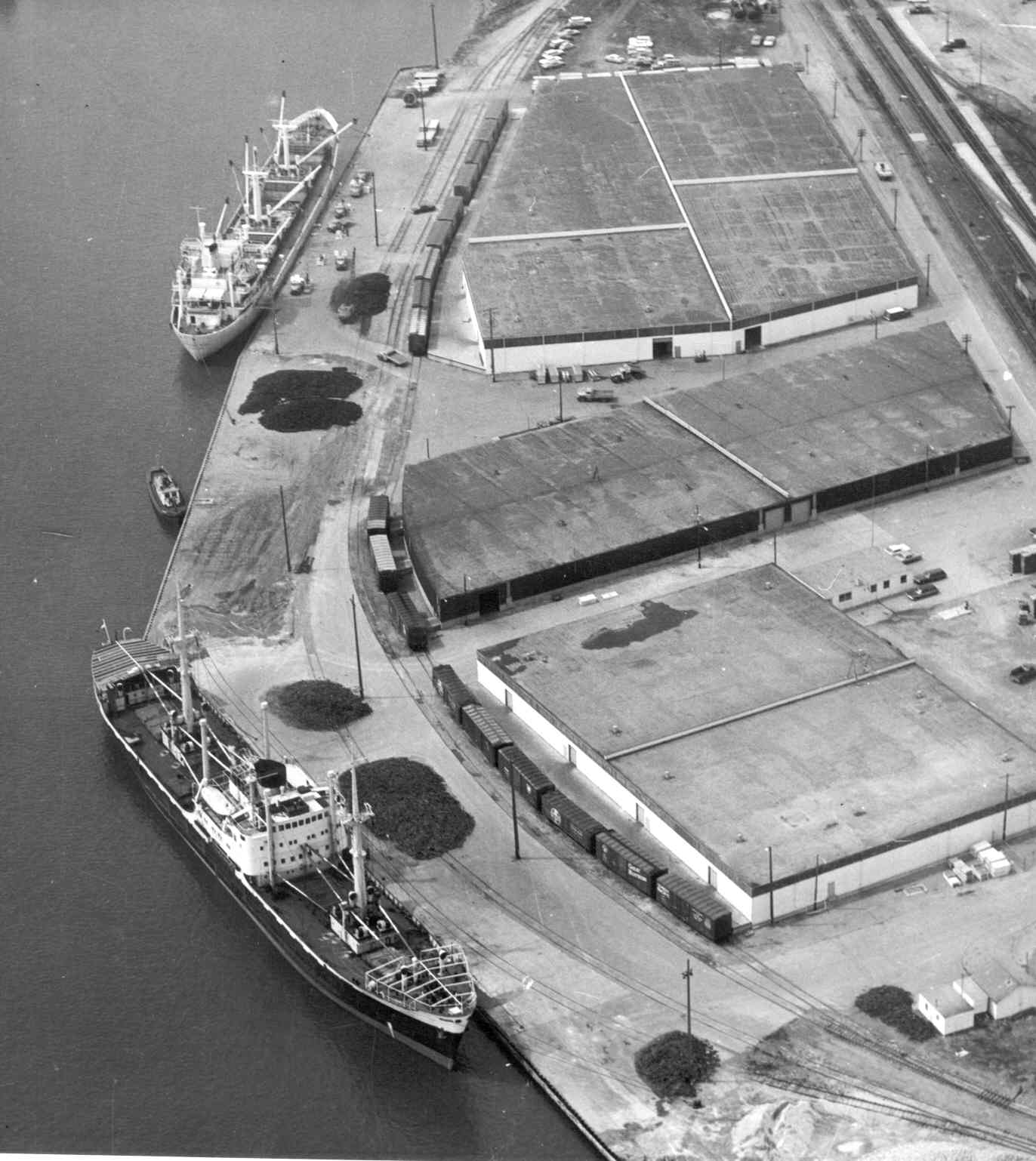Port History
The Fox River and the waters of Green Bay have served as a port for many hundreds of years. The port was first used by the Native Americans, then by the French Canadian fur traders, and for a short time the English. Canoes, flat bottom boats, sailing ships, steamers, tugs, Great Lakes and ocean-going vessels have arrived at the Port of Green Bay over many centuries.
The history of the Port of Green Bay dates back to the early 1800s when waterway commerce focused on fur trading and peltry. During the 1800s British, French and American military forts were built on the lower Fox River. In 1816, the first U.S. flagged sailing vessel arrived with garrison troops and provisions for Fort Howard.
By 1867, the principal commodities exported from Green Bay by sailing vessels were lumber, barrels, shingles, railroad ties and other forest products for building cities like Chicago and New York. In 1871, the Peshtigo Fire destroyed Northeast Wisconsin's forests and changed the Port of Green Bay.
In the late 1800s, agricultural products were being exported and Green Bay was known as the largest flour exporting port on the Great Lakes. By the mid 1930s the Port shifted from exporting to importing with the arrival of coal and petroleum coke. Today, the Port continues to predominately import dry and liquid bulk commodities for Northeastern Wisconsin's manufacturing businesses.
The Brown County Harbor Commission was created in 1928 and became actively involved in port activities in 1956 in anticipation of the 1959 opening of the St. Lawrence Seaway system that made Green Bay an international port, providing mid-America with a direct water link to the Atlantic Ocean and the world.
The Port of Green Bay has developed over its history into a vital and exciting asset to our area and will continue to grow to meet the future needs of our communities.
Quick History of the Port
1634 - Jean Nicolet landed in Green Bay when seeking a short route across the continent to China.
1806 -10,000 pounds of deer tallow and furs were shipped to Mackinaw by bateaux.
1816 -1st merchant vessels arrived with garrison troops and provisions.
1835 -1st shipment of lumber from Green Bay to Chicago.
1867 - Improvement of the harbor facilities by federal government.
1892 - Major shipments are flour, wood pulp, and coal. Total commerce 220,008 tons.
1911 - Major shipments are barley, coal, oats, and pulpwood. Total commerce 780,745 tons.
1935 - Major shipments are coal, pulpwood, cement, and stone. Total commerce 1,797,159 tons.
1970 - Major shipments are coal, limestone, salt, and dried milk. Total commerce 3,046,728 tons.
1981 - Major shipments are coal, limestone, and cement. Total commerce 1,921,637 tons.
1999 - Major shipments are coal, limestone, and cement. Total commerce 1,857,599 tons.
2006 - Major shipments are coal, limestone and cement. Total commerce 2,550,658 tons.
2015 - Major shipments are coal, limestone, salt and cement. Total commerce 1,992,876 tons.
2023 - The Port’s economic impact reaches $217.3 million, an increase of $70.3 million since 2017. The number of Wisconsin jobs supported by the Port is 1,620.
2023 – Major shipments are limestone, cement, salt and petroleum products.
2024 – Port runs pilot program to have sheep maintain vegetation on Renard Island during growing season.








